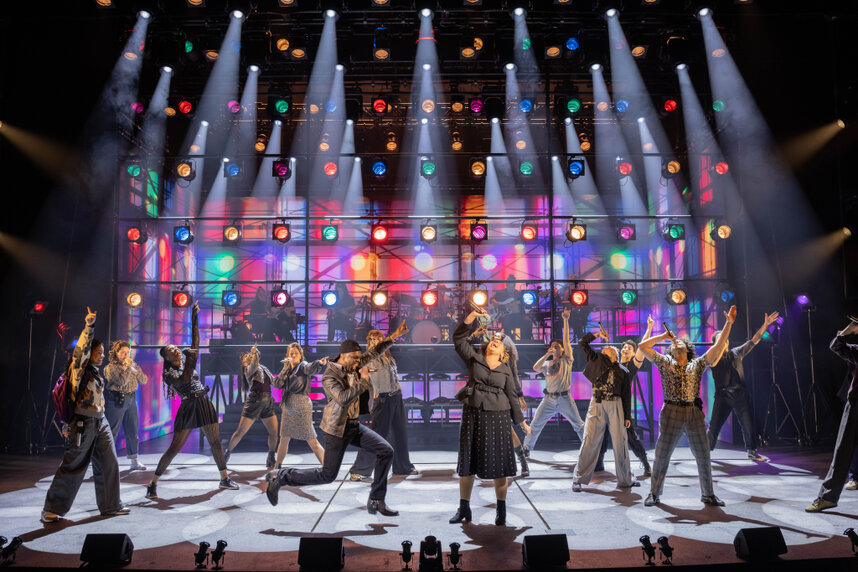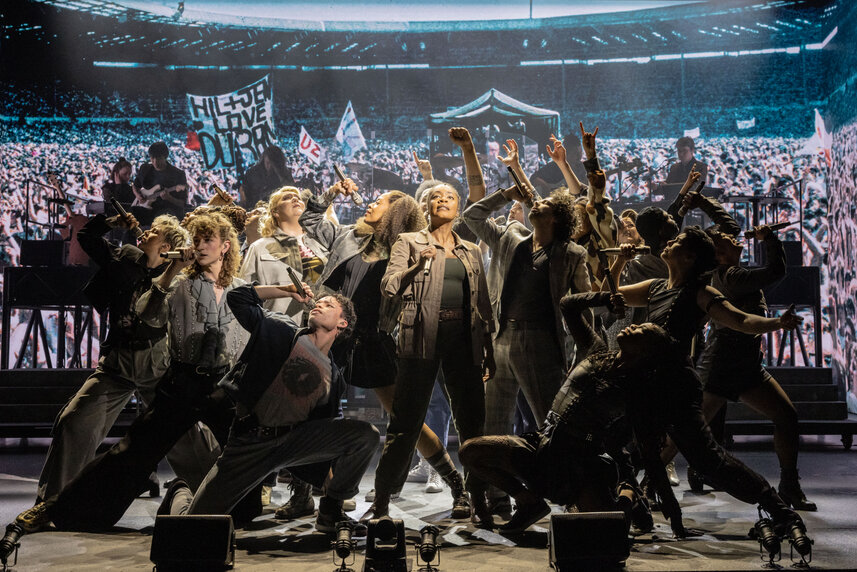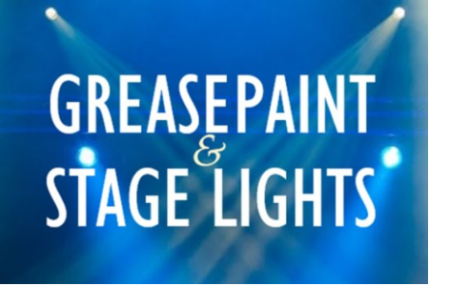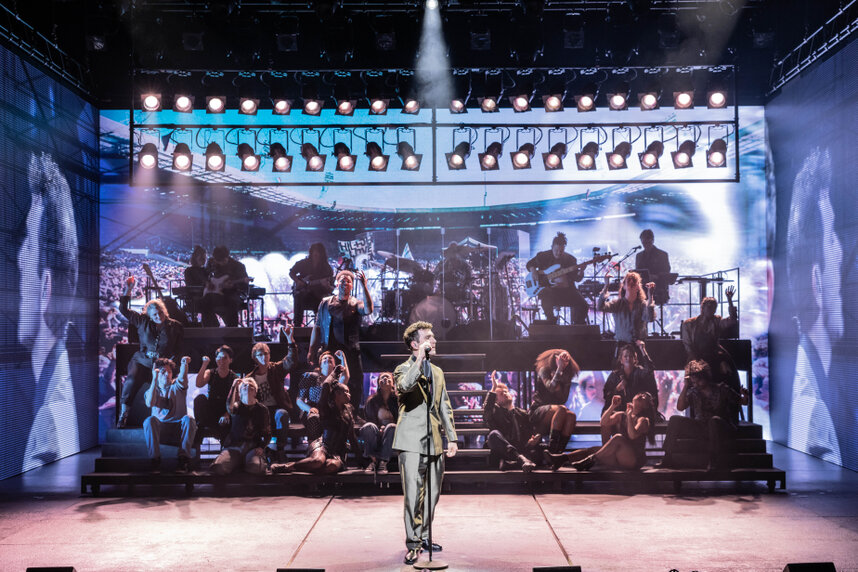Background:
People of a certain age know exactly where they were when JFK was assassinated or when England won the 1966 World Cup. A slightly younger generation had their landmark day in 1985 when two concerts raising money for the devastating famine in Ethiopia played the Wembley Stadium, London and the JFK Stadium, Philadelphia. With a crowd of 72,000 at Wembley and 90,000 in the JFK plus a global TV audience of 1.9billion it was a day to remember.
Review:
With a line up of legendary pop icons and real life behind the scenes personnel, how do you portray this 'Live Aid event' and previous Band Aid single with one Bob Geldof and an ensemble of 20 individuals. Here’s how.

The writer John O’Farrell and production team headed by director Luke Shepherd, wisely decided that there would be no impersonations. Hence, Craig Els doesn’t look like or really sound like Geldof. The same goes for George Ure as Midge Ure (no relation), Tim Mahendran as the exasperated producer Harvey Goldsmith and the villain of the piece Margaret Thatcher played with great vocals and fine-tuned comic timing by Julie Atherton. The rest of the real-life contributors to the record/concert are represented by the multi-talented cast performing their material as solos or duets in snatches of songs, full blown arrangements or in medleys, brilliantly orchestrated by Matthew Brind which push the story along. Some song titles would not fit well in a scene but a line or verse from that song would.
To steer the show away from being a history documentary, the story is told through a present-day mother and daughter. Daughter, Jemma (Faith Ifil) is off to university to study 1980’s History. Mum, Suzanne (Melissa Jacques) presents her with a Live Aid Souvenir Brochure to help her. Jemma can’t see what relevance a little pop concert has to her studies. Hey presto! In walks an f-img and blinding, Bob Geldof. Between Bob, Suzanne and flashbacks to young Suzanne (Hope Kenna) the story is explained. Starting with Bob watching the Ethiopian famine on tv and seeing his wife trying to raise £100 for Oxfam. Knowing this is not enough he goes to see his mate Midge Ure appearing on The Tube and ambushes him into collaborating on a Christmas single for charity. The initial studio session doesn’t go to plan as it needs more than just their two voices. Bob gets on the phone calling all his mates. The will they won’t they turn up jeopardy is hardly nail biting as we know they did turn up in their droves and the record got made. Then the battle began to get radio stations to play the single (some nice digs at the BBC “Please leave your regional accents outside). Without a place in the charts, it would not be eligible for a spot on Top of the Pops. While at Uni, Suzanne works in a record shop and gets involved in pushing the single to reach the Christmas Number one spot. When it beats Wham to the top spot and the money is collected everyone thinks, job done.

The devastation of the famine in Ethiopia is relayed through eyewitness testimony by Amara, a nurse (Rhianna-Louise McCaulsky). When she informs Bob that the grain and the aid that has been sent is sitting, rotting in warehouses, held ransom by cartels and corrupt officials he visits to see for himself. The horror of what Bob witnessed is delt with great sensitivity. It was then clear that the charity would need its own ships, warehouses, lorry’s and that record sales would not be enough to cover it. The rest of the show tells how the team is brought together to put on a concert and how it snowballs into the event of the decade if not the century.
The set by Souter Gilmore, is simple but clever. A double row of seats to suggest stadium bleachers in front of a raised platform housing the incredibly talented (and loud) six-piece band. Furniture is pushed on and off, with precision, by the hard-working cast, seamlessly choreographed by Ebony Molina. The costumes by Fay Fullerton are all monochrome or muted khaki so the ensemble can blend into the background and not pull focus from the action. Howard Hudson’s light design takes us from intimate interiors to hot dusty landscapes and the stadium’s blinding wall of light, to match Gareth Owen’s wall of sound (bone rattling at times).
A devastating disaster is treated with such warmth and compassion, but also with laugh out loud humour. Great visuals. Fabulous vocals. And heart by the bucketload. A must see.
And I remember where I was on that day. I was at a Live Aid Party in a flat in Earl’s Court watching it on the TV. But standing on the balcony we could here the roar and beat coming from Wembley, because the rest of London seemed to be at a standstill.










